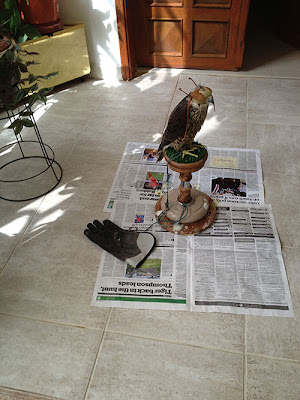As I was researching about punk
rock in the Middle East, I came across the Taqwacore
subculture which I had no idea existed. Taqwacore is punk rock movement
that has emerged following the publication of Muhammad Michael Knight’s 2003
novel, The Taqwacores, depicting a fictitious
Islamic punk rock scene. The word has been derived by combining two words – “taqwa”,
an Islamic concept of love and fear for Allah, and “hardcore”, the punk
rock subgenre. In other words, Taqwacore can be viewed as a punk
music with a Muslim connotation.
According
to Hebdige, “spectacular subcultures express forbidden contents in
forbidden forms. They are profane articulations and they are often and
significantly defined as unnatural…”
This can be applied to the Taqwacore subculture where express ion of forbidden
content in forbidden forms is regular (e.g. expressing frustration of 9/11
attacks in their lyrics; women-led prayers). The basis of the subculture that
is the merging of two seemingly incongruous identities contributes to the
spectacular nature of the subculture. Punk rock, as a subculture and musical style
actively resists mainstream society and embraces a marginalized identity and
role in society. Punk rock blurs traditional boundaries between audience and performer
and questions traditional or accepted norms and values. In stark contrast, Islam
is a structured religion founded on a deeply personal and individual belief in
God and is characterized by selflessness, devotion, and devout sense of social responsibility.
From this we can call Taqwacore as a bricolage where the combination of
various objects and ideas (in this case punk rock and Islam) appears nonsensical
but makes perfect sense to the people involved in the subculture. For the
Muslim punks, Taqwacore serves as a platform where they can embrace their own
interpretations of Islam via punk rock and use internet to build communities
and spread the message.Some of the popular Taqwacore bands are The Kominas, Al - Thawra and Vote Hezbollah.
For this
blog article I will be examining the dressing styles and choices by the Muslim
punks by viewing it from the two forms of incorporating a subculture – (a) the
commodity form & (b) the ideological form. In the Subcultures Reader,
Hebdige refers to the commodity form by mentioning that the subculture is
communicated through commodities even if the meanings attached to those
commodities are purposefully distorted. For the punk rock scene, this commodity
form is represented in through the use of spikes, chains, mohawks and dyed hair.
Interestingly enough, the Muslim punks combine both the usual punk rock
associated styles (use of mohawk and spikes) and Arab traditional wear such as
hijabs and the traditional Palestinian checkered scarves which can be seen in
the below pictures.
The
ideological form occurs when the
subcultural style becomes more accepted through the labeling and re-defining of
deviant behavior by dominant groups such as the media or the police, through
various forms of communication technology. Before the use of pins and spikes on
clothing was unheard of and would probably be labeled as fashion disasters. But
now, it has become a part of mainstream media and hence has become acceptable.
Even in the Qatari society, you can see young females wearing abayas with
spikes and pins.




























